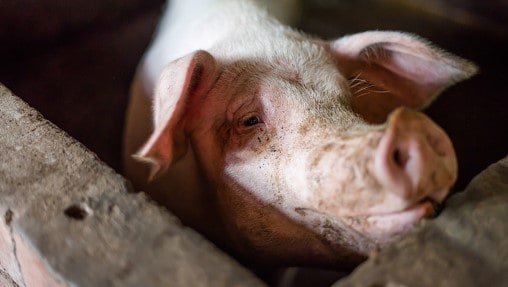Key points
- Japanese encephalitis (JE) virus is a mosquito-borne flavivirus, similar to West Nile virus or St. Louis encephalitis virus.
- The virus is maintained in a cycle between mosquitoes and vertebrate hosts, primarily pigs and wading birds.
- Humans are dead-end hosts but can rarely transmit the virus through blood transfusions.

Virus
JE virus is a member of the family Flaviviridae, genus Flavivirus. JE virus has a single-stranded, positive-sense RNA genome. The virus particles are spherical and have a diameter of 50 nm.
Other medically important flaviviruses circulating in the same area include dengue virus in many locations and tick-borne encephalitis virus, Murray Valley encephalitis virus, and West Nile virus in some locations.
Transmission
JE virus is transmitted to humans through the bites of infected Culex species mosquitoes, particularly Culex tritaeniorhynchus.
The virus is maintained in a cycle between mosquitoes and vertebrate hosts, primarily pigs and wading birds (also referred to as amplifying hosts or natural reservoirs). Humans are incidental or dead-end hosts, because they usually do not develop high enough concentrations of JE virus in their bloodstreams to infect feeding mosquitoes.

JE virus transmission occurs primarily in rural agricultural areas, often associated with rice production and flooding irrigation. In some areas of Asia, these conditions can occur near urban centers.
In temperate areas of Asia, JE virus transmission is seasonal. Human disease usually peaks in the summer and fall. In the subtropics and tropics, transmission can occur year-round, often with a peak during the rainy season.
JE virus can rarely be transmitted through blood transfusions. People with confirmed JE virus infections should not donate blood for 120 days (4 months) after their illness.
